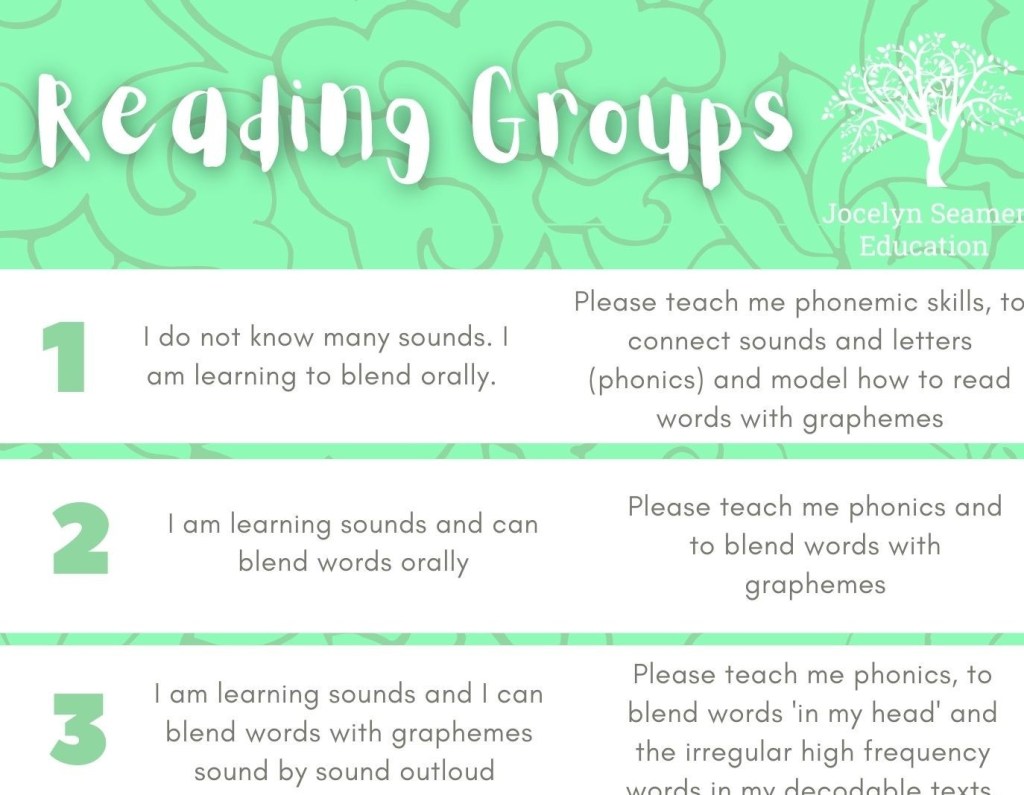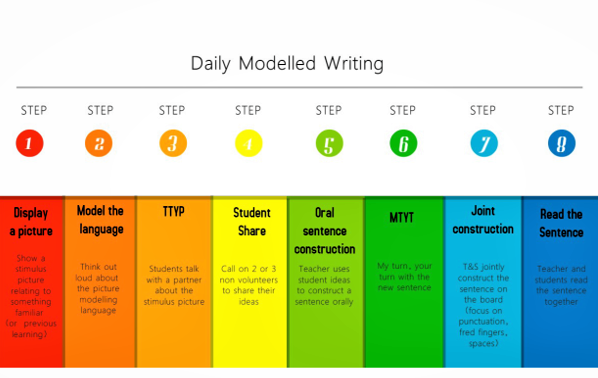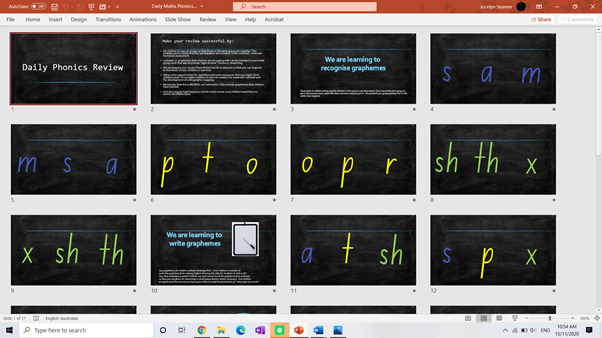Whole Group Teaching in the Foundation Classroom


In my last blog post I discussed the ways that we can group children for small group reading instruction (often called Guided Reading). I talked about the need to focus on skill development rather than ‘reading levels’ for our beginning readers and exactly what you can teach them at each stage of their reading development. You can find that post here(including a handy downloadable).
In this post I would like to explore what ‘whole class’ vs ‘small group’ work looks like and provide some suggestions for what you can teach whole class. I had intended to share guidance on small group instruction in this post, but I felt it necessary to discuss where small group instruction fits into the whole literacy block first. I will outline possibilities for your small group lessons in the next post.
In the foundation classroom it is much easier to teach many aspects of reading to the whole group because the range of skills is likely to be smaller than in later years. So, where possible, teach skills to the whole group, differentiating where you can and then use your small groups to narrow in on very specific learning that closely matches the needs of the group. Maximising the time you teach to your whole class means that students receive as much instructional time as you can give them and minimises the ‘busy work’ that is often a feature of our early years group rotations.
I can hear you saying, “Ok Jocelyn. That sounds great. But exactly what does that look like?”
Let me show you!
Basing our teaching in the big 6 of Reading Instruction and Scarborough’s Reading rope helps us to frame our programs and make sure that we don’t miss anything.

‘Oral Language, Vocabulary and Shared Writing’
The first thing you can teach whole class is your oral language focus. Oral grammar and sentence structure can be taught to the whole class regardless of reading ability. This time is your chance to build background knowledge, vocabulary and oral sentence structures. You can also take the opportunity to engage in modelled/shared writing at the same time.
(Before children are able to read, step 8 can simply be a ‘recite the sentence’ opportunity)

The final thing that you can teach whole class is your text-based work. Using picture books as the foundation for oral language and learning about text features and print concepts is a powerful way to engage your whole class.
Phonological and Phonemic Awareness
Secondly, you can (and should) teach general phonological and phonemic awareness whole group and then use your small group instruction to focus on the particular skill you are building for your group. A program like Michael Heggerty’s program is quick, easy to implement and comes with 35 weeks of prewritten lessons ready to go. It isn’t often that you find a high quality, ready to teach, resource, but this is one of those! You can download sample pages here. https://heggerty.org/downloads/ There are samples here for the whole of the lower primary. If you are ready to order you can do so here.

Phonics
Phonics is much easier to teach whole group at the start of the foundation year as the range of skills and knowledge will be reasonably small, however in a typical classroom some children will ‘take off’ and the range will widen to the point where you will need to move to small group instruction (or work with another teacher to combine and group the students) in order to provide the necessary focus that the children need. It is not advisable to try and teach a broad range of phonemes and graphemes (sounds and letters) to the whole group. This will be fine for some children, but children who require a more structured approach may well find a ‘broad range’ of content cognitively overloading and therefore experience difficulty committing this new learning to memory. As our aim is to give EVERY child in the class the chance to learn to read as quickly as possible we need to design learning to maximising the opportunity for sharp and targeted teaching for all groups.
In saying that, you can absolutely conduct differentiated whole class review work which is short and snappy and provides spaced practice for all students. This also exposes students to the next level of content without asking them to learn it. I call this ‘exposure without expectation’. Those who are ready and able will ‘pick up’ a few things from seeing what other groups are doing and those who are not are not placed in the position of having to twist themselves in knots learning their own content and the next lot as well. Essentially to do this you create a PowerPoint with three colours (presuming you have three groups in your class). You can download a sample PowerPoint with instructions below.

So, in preparation for my next post where I promise I will share my thoughts on what to teach in your small group reading instruction, here is a summary of what you CAN teach whole class in just about any foundation classroom.
- Oral sentence structure
- Vocabulary
- Background knowledge
- Phonological and phonemic awareness
- Daily shared writing
- Phonics review
- Language features

 Jocelyn Seamer Education
Jocelyn Seamer Education
0 comments
Leave a comment